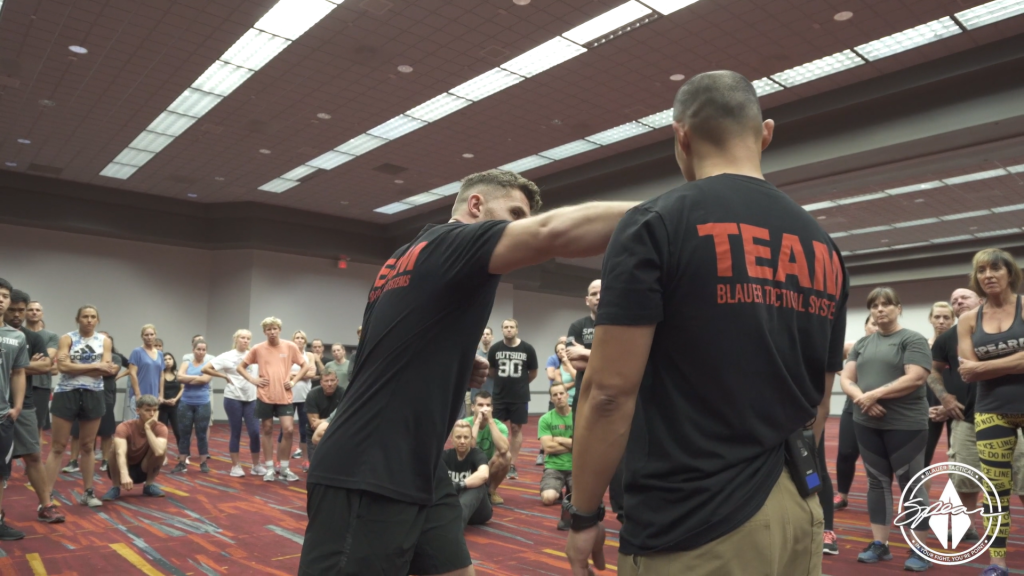SDN has moved again!
Subscribe to our RUMBLE channel
Situational Awareness and Self-Awareness are different parts of the same problem-solving dilemma.
While almost everyone mentions “situational awareness” during self-defense education. Rarely is ‘self-awareness’ discussed.
Self-awareness during high-risk scenarios is critical.
This is self-talk.
But it must be the right self-talk.
“We’re all going to die!!”
Not the ideal message you want your inner voice to be screaming, right? ????????
Remember, it’s ‘game day’, no time for more drills, no more training – you’re as good as you can be – for now.
So what can make the difference in a high-stakes, high-stress, high-risk scenario?
Functional self-awareness.
- It’s ‘self-awareness’ that notices a physiological change (fear spike) and then the requisite self-talk that helps us regulate our state (controlling our breathing, etc.).
- It’s ‘self-awareness’ that notices the we’re in fear loop and hesitating.
- It’s ‘self-awareness’ that leads to self-talk that helps us, no encourages us to choose courage
- It’s ‘self-awareness’ that commands us to strategize when we’re in danger (run, barricade, attack the attacker, etc.)
Situational awareness helps us spot the problem, but it doesn’t guarantee we will act. What we do next requires a deeper connection to how we think and coach ourselves.
Let’s revisit the scenario’s influence on all this.
????The scenario changes the intensity of any given situation.
????And I would argue that this is actually more important than fixating on the biomechanics of the technique you’re trying to learn.
And that’s problem, most people practice the move without the context of the scenario and that conversation changes the risk which changes fear which certainty impacts situational awareness!
In other words, escaping a headlock in a Jiu-Jitsu match is going to be different than escaping a headlock in a street fight.
Yes, even if the biomechanics to escape the attack are the same! The urgency, risk, and the danger in scenario 2 can affect emotional and psychological clarity.
- Intensity affects physiology.
- Physiology influences psychology.
- The mind navigates the body.
The scenario always influences the level of violence.
And that activates our fear response.
In lay terms, fear affects how you feel and think and that will dictate how you move.
Self-awareness amplifies situational awareness.
It’s the fundamental part most miss as it’s assumed. But there are lots of examples of people who see the problem but fear (doubt, hesitation, etc) prevents them from responding effectively or more efficiently.
This was the magic connection discovered in the ’80s during our experimentations with scenario training: “Those who manage their fear, manage to fight.”
Fear management training improves situational awareness, which in turn, improves critical thinking and all of that helps amplify situational awareness. They’re all connected!
I hope this lesson makes you all a little safer.
The most important skill set you can have is the proper mindset.
Coach Blauer
=====
Become a Survival Dispatch Insider …
We bring together survival enthusiasts and preppers to share skills and knowledge, so you can enhance your preparedness for emergencies and ensure the safety of you and your community.
The Results You’ll Get …
Our community, courses, and memberships are pretty special. We focus on the ways it will make a huge difference in your life.
Here are a few of the things you’ll be able to do as a member of Survival Dispatch Insider …
1) Improve your emergency preparedness by learning survival skills and strategies from experienced preppers.
2) Build lasting connections with like-minded individuals that share your passion for safety and readiness.
3) Access a wealth of knowledge and resources to assist in protecting you and your community during unexpected situations.
Click HERE to get started.
=====

